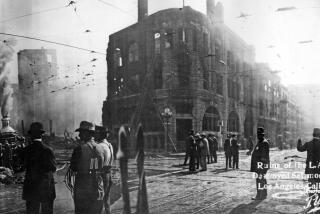Leo Frank lives
On Aug. 17, 1915, Leo Frank, a Cornell-educated Jewish industrialist, was lynched just outside Atlanta. The atrocity marked the culmination of an ugly conflict that began with the 1913 murder of a child laborer named Mary Phagan, who toiled for pennies an hour in Atlanta’s National Pencil Factory. Frank, the plant superintendent, was convicted of the crime and sentenced to death, though he always maintained his innocence. He appealed his case all the way to the U.S. Supreme Court, losing each time, whereupon Georgia Gov. John Slaton commuted his sentence to life imprisonment. The decision so angered the general populace that a mob organized by a Superior Court judge, the son of a U.S. senator and a former governor abducted Frank from a well-guarded state prison and hanged him from an oak tree.
The lynching of Frank seems like an incident out of another America, one of gray-bearded Civil War veterans and Jim Crow, Model Ts and ragtime. Woodrow Wilson was president. “The Birth of a Nation” was playing in theaters. The story, however, remains very much alive. Throughout the fall, “Parade,” the Alfred Uhry musical inspired by the affair, has been drawing crowds to the Mark Taper Forum. On Nov. 8, KCET will broadcast “The People v. Leo Frank,” the first full-length documentary to explore the topic.
There are many reasons why the Frank case continues to command attention. For one, both the murder of Mary Phagan and the lynching of Leo Frank are crimes as puzzling as any Arthur Conan Doyle ever invented. Strange notes, racial paradoxes (an all-white jury convicted the factory boss on the testimony of a black witness) and an intricate conspiracy played a part. But finally the story is still relevant and intriguing because the conflict at its core foreshadows today’s red-state/blue-state hostilities.
The raw material for class warfare was, of course, there from the start -- a lovely Southern girl found murdered at a business run by a Northern Jew. But it wasn’t until after Frank’s conviction that matters exploded. At the urging of the rabbi of Atlanta’s Reform synagogue, a nationwide campaign to exonerate the condemned man was inaugurated by Adolph Ochs, publisher of the New York Times, and A.D. Lasker, the advertising genius behind Sunkist orange juice and Lucky Strike cigarettes. They believed that Frank had not been so much prosecuted as persecuted.
To attract attention to what he viewed as an injustice, Ochs launched the Times’ first -- and to this day only -- journalistic crusade. Over an 18-month period, the paper published not just dozens of editorials demanding a new trial for Frank but scores of news articles slanted in his favor. For his part, Lasker orchestrated public relations stunts and hired William Burns, the private detective who solved the 1910 bombing of the Los Angeles Times, to turn up new evidence. Although Ochs and Lasker were convinced that anti-Semitism had poisoned Frank’s trial, they and their supporters in New York and other urban areas did not take into account how their efforts would come across in the South or in working-class heartland neighborhoods.
Articulating the populist response was future U.S. Sen. Tom Watson, a Georgia lawyer and polemicist of such superior rhetorical gifts and inexhaustible vitriol that Rush Limbaugh and Glenn Beck pale in comparison. Week after week in his widely circulated paper, the Jeffersonian, Watson rebutted Ochs and Lasker, arguing to his vast readership that self-appointed elites representing money and privilege had decreed that a child laborer’s life was not equal in value to that of a Jewish industrialist. “The agrarian rebel,” as historian C. Vann Woodward dubbed Watson, gave voice to a constituency that felt excluded from the halls of power in Washington and on Wall Street. When Slaton commuted Frank’s sentence, Watson called for the lynching.
No one involved in Frank’s death was ever convicted or even indicted. (The chief prosecutor of the county in which the incident occurred helped to plan it.) The polarizing impact of the affair made itself felt almost immediately. On Thanksgiving eve 1915, a few months after Frank was hanged, the Ku Klux Klan held its first modern-era cross-burning atop Stone Mountain, several miles east of Atlanta. (Three members of the lynching party were present.) Meanwhile, the Anti-Defamation League, which had been founded in 1913, took up the fight against religious intolerance in earnest.
The Frank case, however, was about more than racism and anti-Semitism. It was also about the conflicting perceptions of the nation’s haves and have-nots, the chasm between the people who appear to run things and those who feel they lack a say. While it’s doubtful that a mob could break into a state prison in 2009 and lynch an inmate, it’s not difficult to imagine a scenario in which something almost as bad transpired. In an era of escalating home foreclosures and rocketing unemployment, endless bank bailouts and hefty bonuses to Goldman Sachs traders, the Frank saga says as much about current events as it does about history.
More to Read
Sign up for Essential California
The most important California stories and recommendations in your inbox every morning.
You may occasionally receive promotional content from the Los Angeles Times.










